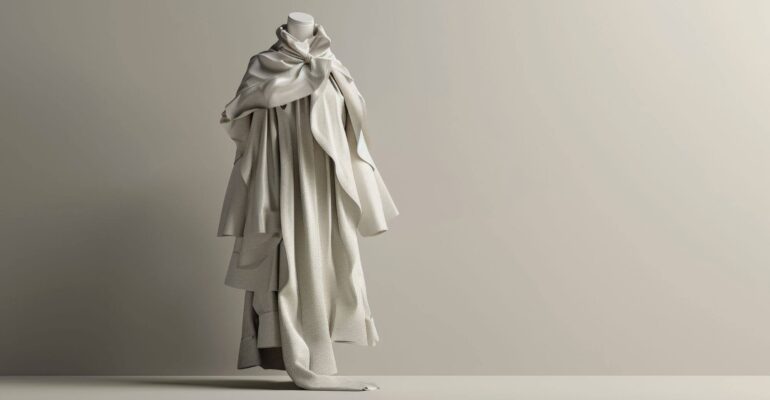“Upcoming Fashion: Trends and Innovatives to Watch”
February 4, 2025 2025-02-06 6:06“Upcoming Fashion: Trends and Innovatives to Watch”
Fashion is more than just an industry, it’s an ever-evolving reflection of culture, technology, and social change. As we move into the next decade, several key trends are set to redefine fashion. From sustainability to the fusion of technology and style, the fashion world is undergoing a major transformation. At Dhruva College of Fashion Technology, we’re preparing our students to lead this revolution and stay ahead of the curve.
1. Sustainability: The Heart of Fashion’s Future
Sustainability is no longer a niche concept in fashion. It’s rapidly becoming a fundamental aspect of the industry. Consumers are demanding more eco-friendly choices, and designers are rising to the challenge. As the fashion world confronts its environmental impact, brands are shifting towards more sustainable practices, and this trend will only intensify in the years ahead.
What’s Driving Sustainable Fashion:
- Eco-Friendly Materials: Designers are turning to biodegradable fabrics like organic cotton, hemp, and bamboo. They’re moving away from harmful synthetics that take hundreds of years to decompose.
- Recycled Fabrics and Upcycling: More brands are embracing recycled materials, such as fabrics made from plastic bottles or repurposed textiles. Upcycling, transforming old garments into new creations is gaining popularity as well.
- Circular Fashion: The industry is moving towards circularity, where clothing can be reused, recycled, or repurposed at the end of its life cycle. This reduces waste and promotes sustainability.
At Dhruva College of Fashion Technology, students learn how to prioritize sustainability in their designs. They study eco-friendly materials and ethical production practices, preparing to lead the charge for a greener, more responsible fashion industry.
2. Technology in Fashion: The Integration of Smart Clothing
Technology is no longer just an accessory to fashion, it’s becoming an integral part of how we design, wear, and interact with clothes. From smart fabrics to 3D printing, the fashion will focus on functionality.
Technological Innovatives to Watch:
- Smart Fabrics: Materials that react to environmental factors like color-changing fabrics or temperature-regulating textiles will become more common. These garments will respond to heat, moisture, or light, offering new ways to interact with clothing.
- Wearable Technology: Clothes with built-in sensors that monitor health metrics, track physical activity, or provide augmented reality experiences will revolutionize fashion. Imagine jackets that monitor your heart rate or shoes that track your steps.
- 3D Printing: 3D printing will enable designers to create custom-made clothing and accessories on demand. This reduces waste, eliminates overproduction, and gives designers unprecedented freedom to experiment.
- Virtual Fitting Rooms: As online shopping continues to dominate, virtual fitting rooms powered by augmented reality (AR) will allow consumers to try on clothes virtually. This will enhance the shopping experience and reduce returns.

At Dhruva College of Fashion Technology, students have the opportunity to experiment with these technologies. From designing with smart fabrics to exploring 3D printing, we’re equipping students with the tools to embrace the future of fashion.
3. Personalization and Customization: A New Era of Fashion Consumption
The fashion is all about personalization, designing clothes that cater to individual tastes and needs. As this trend takes off, customization will move beyond just the fit of a garment, it will extend to the design process itself.
What’s Driving Personalized Fashion:
- Made-to-Order Clothing: Instead of mass-produced garments, consumers will demand made-to-order clothing that fits perfectly and reflects their unique style. This reduces waste and ensures a better customer experience.
- AI-Powered Design: Artificial intelligence will enable designers to create personalized clothing recommendations based on a consumer’s preferences, body type, and previous purchases.
- 3D Printing for Customization: 3D printing will allow consumers to design their own garments, giving them the freedom to choose materials, colors, and shapes that suit their taste.
- Personalized Shopping Experiences: With AI, shopping will become more intuitive. Virtual assistants and chatbots will guide consumers, offering curated fashion options based on their individual preferences.
At Dhruva College of Fashion Technology, we encourage students to explore these personalized trends. We teach them how to integrate AI and 3D printing into their design process, preparing them to meet the growing demand for customized fashion.
4. Virtual Fashion: The Rise of Digital-Only Clothing
The digital world is expanding, and so is the role of fashion in virtual spaces. Virtual fashion is no longer confined to video games or social media avatars. It’s becoming a legitimate part of the fashion ecosystem. The Metaverse is providing new opportunities for designers to create digital-only collections, where the lines between physical and virtual fashion are increasingly blurred.
Virtual Fashion Trends to Watch:
- Digital-Only Clothing: Consumers will be able to purchase virtual outfits for their online avatars or social media profiles. These garments won’t have a physical form but will allow individuals to express themselves in the digital world.
- Metaverse Fashion Shows: Virtual fashion shows, hosted in the Metaverse, will offer a new, immersive way to showcase collections. These digital platforms will bring global audiences together in a fully interactive experience.
- NFTs and Fashion: Non-fungible tokens (NFTs) will allow designers to sell exclusive, digital-only clothing collections. These NFTs will give consumers ownership of unique, digital assets, further pushing the boundaries of fashion.

At Dhruva College of Fashion Technology, we’re preparing students to design for both the physical and digital worlds. Through courses on digital design and augmented reality, students are learning how to navigate this new frontier of fashion.
5. Inclusive Fashion: A Global Approach to Diversity
Fashion is becoming more inclusive, and this shift is set to continue in the coming years. Consumers are demanding greater representation in the industry, pushing brands to create clothing that caters to all body types, genders, and cultures. As inclusivity becomes the norm, fashion will reflect the diverse, global society we live in.
What’s Driving Inclusive Fashion:
- Size Inclusivity: Fashion brands are expanding their size ranges to be more inclusive. The focus is now on creating fashion that fits and flatters all body types.
- Gender-Neutral Clothing: Unisex and gender-fluid collections will continue to rise in popularity. Fashion will become more flexible, allowing consumers to choose pieces that feel most authentic to them, regardless of traditional gender norms.
- Cultural Representation: Designers will embrace cultural diversity, creating collections that reflect a wide range of global influences. Fashion will celebrate heritage, identity, and self-expression.
At Dhruva College of Fashion Technology, we emphasize inclusivity in our design philosophy. Our students learn how to create designs that cater to all body types and identities, ensuring they are prepared for an inclusive, diverse fashion future.
Conclusion:
The future of fashion is exciting and full of endless possibilities. From sustainability and smart clothing to personalized fashion and virtual worlds, the industry is evolving at a rapid pace. At Dhruva College of Fashion Technology, we’re committed to equipping our students with the skills and knowledge needed to thrive in this dynamic, ever-changing field.
We encourage students to think boldly, experiment with new technologies, and embrace the diverse, inclusive world that fashion is becoming. The next generation of designers is shaping the future and at Dhruva College of Fashion Technology, we’re helping them lead the way.






